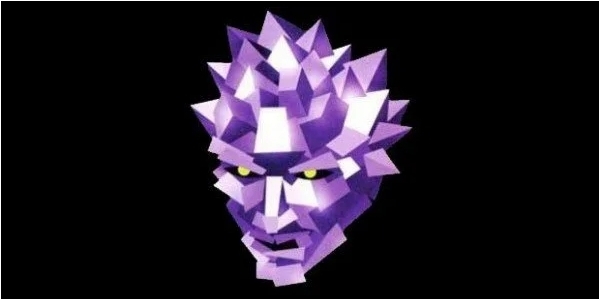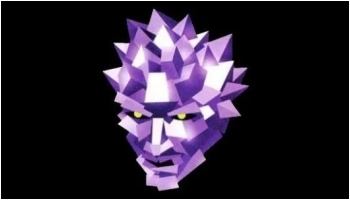
The PlayStation is 25! So let’s take a trip back to 1995 and the console’s debut at the E3 Expo in this edition of Bite-Sized Game History.
We’ll also get a chance to talk about another mid-90s mainstay, Adam Sandler, and a funky font choice that popped up a lot in arcade games from the era.
![]() You can find a lot of dedicated video game historians on Twitter, and in 280 characters or less, they always manage to unearth some amazing artifacts. Bite-Sized Game History aims to collect some of the best stuff I find on the social media platform.
You can find a lot of dedicated video game historians on Twitter, and in 280 characters or less, they always manage to unearth some amazing artifacts. Bite-Sized Game History aims to collect some of the best stuff I find on the social media platform.
Unlike Microsoft with Master Chief and Nintendo with Mario, Sony’s consoles have never really had an official mascot, though you probably remember a slew of smaller characters (including Crash Bandicoot, Sweet Tooth, and the long-forgotten Jersey Devil) ably serving as the de facto faces of Sony’s PlayStation in the late 90s. But though they ultimately decided against it, the consolemaker very nearly recruited their own mascot to go toe-to-toe with Nintendo’s Mario and Sega’s Sonic.
Say hello to Polygon Man.
John Ricciardi, formerly a journalist at Electronic Gaming Monthly and the founder of localization house 8-4, recently rediscovered his copy of the PlayStation press packet from E3 1995. Multiple pages of the press packet were completely plastered with pictures of the prospective pitchman, who was a floating head that promised to “warp your reality” and “torque your dreams” with the “ultimate game system power” of the PlayStation.
Though the PlayStation had launched in Japan more than six months earlier, Polygon Man was a creation of the marketing department from Sony Computer Entertainment’s American branch, and he was making his public debut during the E3 Expo.
The mascot came with reams of market research and a fancy pedigree (he was designed by the same ad agency that produced Apple’s infamous “1984” spot), but he was commissioned without the approval or knowledge of SCEA’s bosses in Japan. According to an investigation into the PlayStation’s launch published in Edge Magazine, Ken “The Father of the PlayStation” Kutaragi was so furious that he personally demanded the removal of Polygon Man from the booth.
Polygon Man would briefly resume his mascot role for the PlayStation brand in 2012’s PlayStation All-Stars Battle Royale, serving as the final boss of the crossover fighting game:
PlayStation 1 US unveiling press junk #PS25 pic.twitter.com/vpCLm3rdOV
— John Ricciardi (@johntv) December 2, 2019
If you were a teenager in 1996, especially if you had the comedy stylings of What the Hell Happened to Me? on repeat in your discman like I did, Happy Gilmore needs no introduction. But for those who need a refresher, Happy Gilmore was a movie starring Adam Sandler (his first after leaving Saturday Night Live) as an amateur hockey player who becomes a pro golfer. Along the way he befriends a caddy played by Carl Weathers (better known as Rocky‘s Apollo Creed), starts dating a marketing executive played by Julie Bowen (more than a decade before she was Claire on Modern Family), and suffers a rather famous beating at the hands of Bob Barker (who was playing himself).
In the end… spoiler alert, I guess… Happy wins the big tournament, saves his grandmother’s house, and thwarts an evil nursing home administrator played by Ben Stiller. It’s a fun slice of 90s comedy (even non-teenaged critics liked it), and even though its theatrical debut coincided with a boom period for licensed games, no publishers took a chance on Happy Gilmore.
But another boom period struck just a few years later, and licensed games were everywhere once again in the mid-2000s. In addition to a regular cadence of Disney, Spider-Man, and James Bond releases, this gold rush led to a large catalog of other adaptations such as the ambitious Enter the Matrix, the baffling Fight Club, and the underrated Evil Dead: A Fistful of Boomstick. But did you know this crowded field almost made room for Happy Gilmore: The Game?
Digital Eclipse pitched Sandler’s production company on turning Happy Gilmore into a game during the Xbox era, though it’s unknown why it never happened. Thankfully, developer Mike Mika recently unearthed a few pictures from the proposal, including the revelation that Happy’s hockey stick could drive a ball more than 800 yards.
Here’s hoping some publisher sees the potential in Happy Gilmore: The Game someday, because I think it could really work:
That time we worked with Sandler’s production company to pitch a Happy Gilmore game. pic.twitter.com/gBkzPSoOyi
— Mike Mika (@MikeJMika) December 27, 2019
The distinctive comic-style font Midway used for Mortal Kombat‘s leaderboard and character bios has become synonymous with the franchise, but did you know it had a considerably long history before it was rediscovered by Ed Boon and John Tobias?
The chunky characters were part of the Comix typeface, which was originally included with Deluxe Paint, one of a handful of productivity programs developed by Electronic Arts. Thanks to its unconventional style, Comix was perfect for attracting players from across a crowded arcade or giving a nice pop to a DOS game running on a VGA monitor. According to @codeman38, a lot of developers in the 80s and 90s created art for their games using Deluxe Paint, which is why Comix felt rather ubiquitous even before it became known as “the Mortal Kombat font.”
But @codeman38 discovered that Comix had an even earlier life as part of several shareware font collections for the Mac, where it was known as Cartoon 12. @codeman38 isn’t entirely sure when Cartoon 12 became Comix, but we do know it was created for Through the Looking Glass, one of the first (and only) games published by Apple for the Macintosh (and programmed by Steve Capps, one of the architects of the Mac).
This font-based game of telephone really proves just how interconnected a lot of early game development was:
This is a thread about a font that's appeared in a lot of video games over the years, and how it was surprisingly challenging to track down its true origin.
And no, it's probably not the one you're thinking of (though that one has an interesting story as well!).
— codeman38 (@codeman38) November 29, 2019
Thanks to John Ricciardi, Mike Mika, and @codeman38 for supplying these bits of Bite-Sized Game History.

